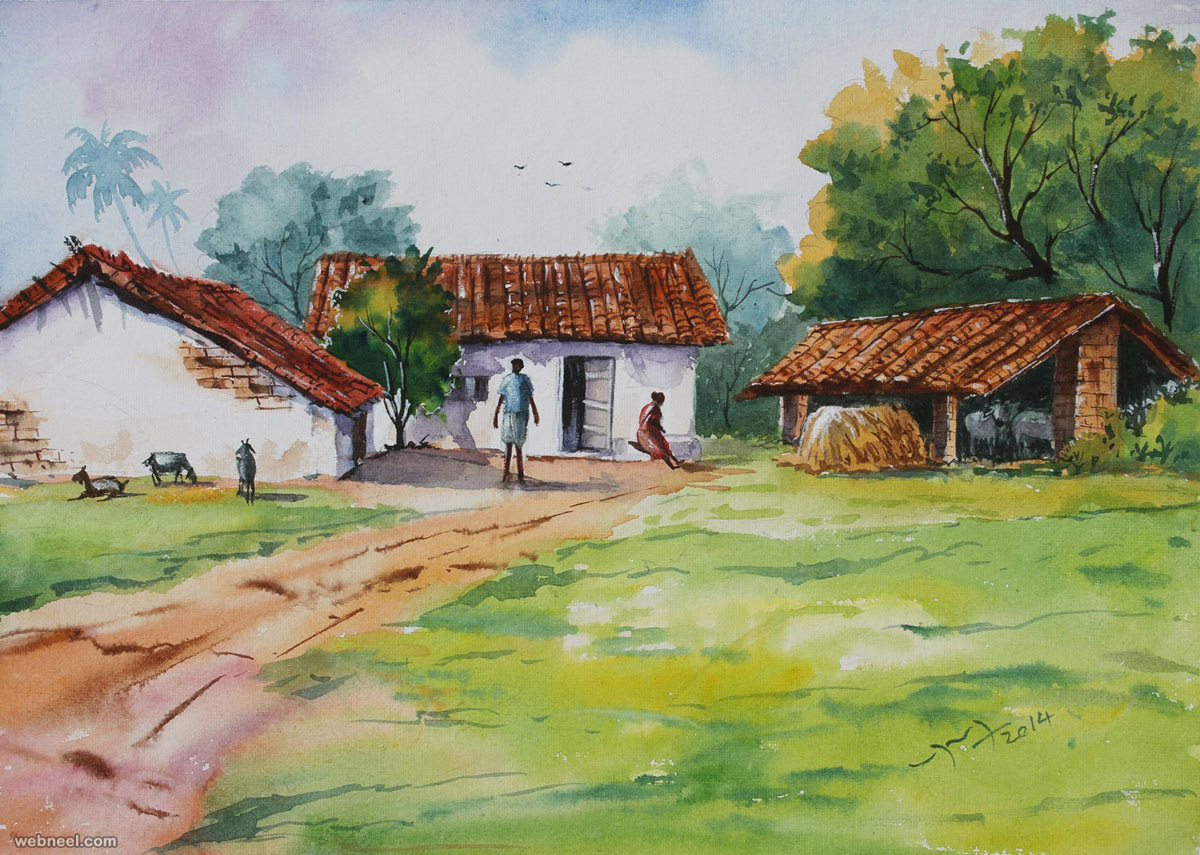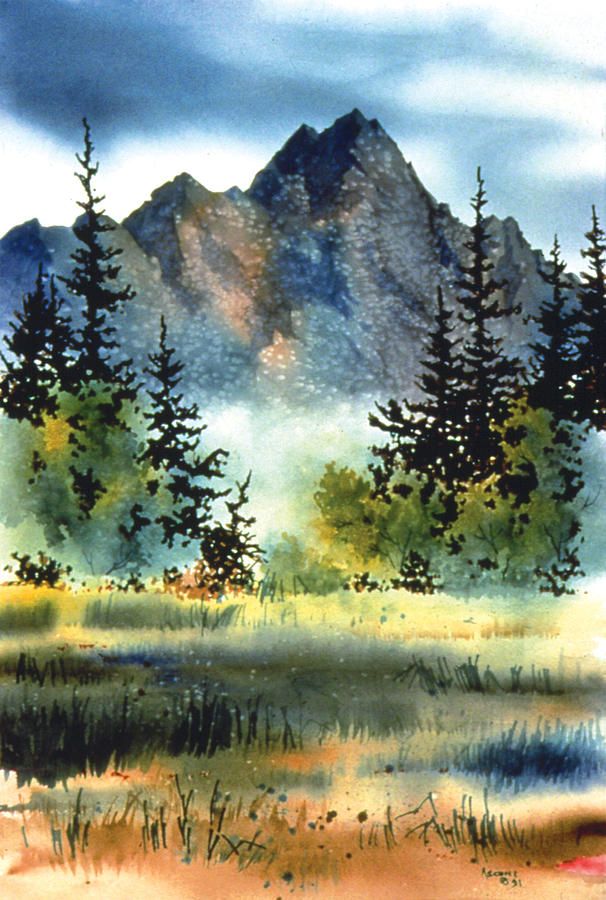

How to paint realistic waterĪ simple lake should begin as a graduated wash. There is nothing more annoying than to realise that a slightly different shot would have been so much better. It is better to paint a general feel of the water movement rather than a precise instant. If you are working from a photograph remember that the camera only captures an instant on the water. All too often I find that painters do not look around enough before starting.

With the view I settled on, the little gazebo on the lake shore was an obvious possibility, but I still spent quite a bit of time walking up and down the lake shore first to find what I thought was the best aspect. If you are fortunate enough to find someone fishing, this can also provide interest with the added advantage of them probably remaining in position for some time. Look for nicely shaped trees and shrubs, or jetties and walls which are usually fairly common features.

If you are painting a lake, that foreground interest is probably the most important consideration. The relative stillness of the lake contrasts nicely with the busier landscape and choosing a suitable and interesting foreground really helps to create a harmonious and interesting whole. It is, after all, just a large amount of water but what makes it interesting to most artists is the effect of light on the water and the relationship between the lake and the surrounding land. Based in a hotel on the shore of Lake Windermere gave me plenty of opportunity to study and paint the lake, even if it did raise some interesting challenges – not least the fact that any lake is not a terribly interesting subject by itself. The potential subject matter is plentiful and picturesque with mountains, rivers and extremely paintable villages in addition to the lakes. I began to think it must never rain in the Lake District. On my return, we also had five days of solid spring sunshine with the added bonus of warm temperatures.

The last time I had visited the area was during my honeymoon many years ago when we had five unbroken days of dawn to dusk sunshine in March. The Lake District is undoubtedly one of England’s most popular regions and I jumped at the chance to tutor a workshop there with Alpha Painting Holidays. In this guide I show you how it’s done in just four steps and how you can transfer the technique to a larger watercolour artwork. Grahame Booth, Lake Windermere, watercolour on paper, 35x26cmīefore you begin painting a landscape of a lake, be sure you know how to paint realistic water. Painting in a land component gives you a chance to add other elements, like wildflowers or rocks, that add depth to your painting and make it more realistic.Link copied to clipboard Grahame Booth shows you the techniques you need to master before painting a realistic lake scene in watercolour A waterline usually does not span the entire shore it’s mostly a broken line with many variations of thick and thin. Waterlines, where the water comes up on the land, are light in value and are made up of neutral, earthy colors. Ripples are an exception to the rule and usually just distort the reflection in the water, but I suggest studying some photos of ripples before deciding how you want to paint them. Sometimes a water scene can contain both calm and moving water, which calls for some reflections and also some energetic and varied strokes. Where there’s movement in water - a waterfall, waves, rapids - there are no reflections. This lightens up the water in a subtle way, giving it a realistic look. Once it’s dry, I take some acrylic glazing liquid and a small amount of white paint, and glaze this mixture smoothly over the reflection. To begin, I paint the reflection almost the same color as the object. One technique I turn to a lot is glazing. The opposite is true for the tree’s highlights. If you are painting a reflection of a tree, the reflection of the dark part of the trunk will be lighter than it is on the trunk itself. In general, the values of an object reflected in the water are more muted than on the object itself. For Calm Water, Follow the Value Rule for Reflection Better to paint from life or from a photograph. When painting something as variable as water, trying to capture the image in your mind’s eye is really hard. Consider these tips to set yourself up for success: 1. But water is also one of the most difficult things to paint realistically in acrylic. There’s something deeply compelling about its ever-changing nature, whether in a still, reflective pond or a rushing stream.


 0 kommentar(er)
0 kommentar(er)
